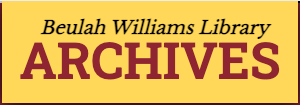Political Strategy Achieves the Vote
After much controversy and many contentious public meetings, citizens with lands in two proposed irrigation districts along the James River –the West Brown and Spink irrigation districts- voted to approve formation of two irrigation districts. The federal government demanded that public interest in water projects be clearly demonstrated, and formation by election of conservancy and irrigation districts reflected public support for a project.

It is also noteworthy that landowners in an irrigation district would be taxed to help pay to maintain an irrigation project’s infrastructure, including ditches, pumps, drainage systems, and other costly features. The federal government would bear much of the expense to build the project, but once completed operations and maintenance expenses would be paid by local taxpayers. To eliminate or minimize political interference, irrigation district organizers decided to dramatically downsize the irrigation districts by deleting lands in the proposed districts that belonged to landowners opposing irrigation. This strategy prevented Oahe project opponents from voting in the irrigation district elections. Opponents protested that despite having their lands removed from the districts, they would still be impacted by features of the irrigation project, such as water delivery and water drainage ditches, and would still be subject to conservancy sub-district taxation. This strategy created irrigation districts lacking contiguous lands, and possessing, instead, checkboard patterns of involved lands.
Irrigation District Boundaries

This map shows the general boundaries and lands included in the West Brown and Spink County irrigation districts, established by landowner vote in 1965. Each irrigation district was characterized by a checkerboard of lands, reflecting lands owned by irrigation supporters and lands owned by irrigation opponents. Lands in and out of the district were side-by-side throughout the area. The lack of broad support in the local irrigation areas would eventually prove problematic for project development. The elections to form the districts were characterized by lackluster turnout, and some public officials worried that modest interest by potential farmer - irrigators didn’t match the fervor about the irrigation project shown by the business community. When the irrigation districts were formed in 1965, the two irrigation districts comprised about 190,000 acres.
First Finished Feature of Oahe plan
The James Diversion Dam was constructed on the James River north of Huron, South Dakota. Completed in 1964, the dam was intended to impound river flows to be pumped into nearby Byron Reservoir, a project feature that was never completed. From this reservoir, water would have been conveyed northward via canal to irrigation areas in Brown and Spink counties. Resistance to irrigation among landowners east of the James River in Brown County convinced project proponents in the Oahe Conservancy Sub-district and the Bureau of Reclamation to avoid organizing an irrigation district there. Construction of this dam, however, strongly suggested to irrigation opponents that project promoters would eventually seek expansion of Oahe’s plan to include irrigation east of the river in Brown County. Though it never served the Oahe irrigation project, this dam did help stabilize Huron’s municipal water supply. It is the only Oahe project construction feature to have been completed.

